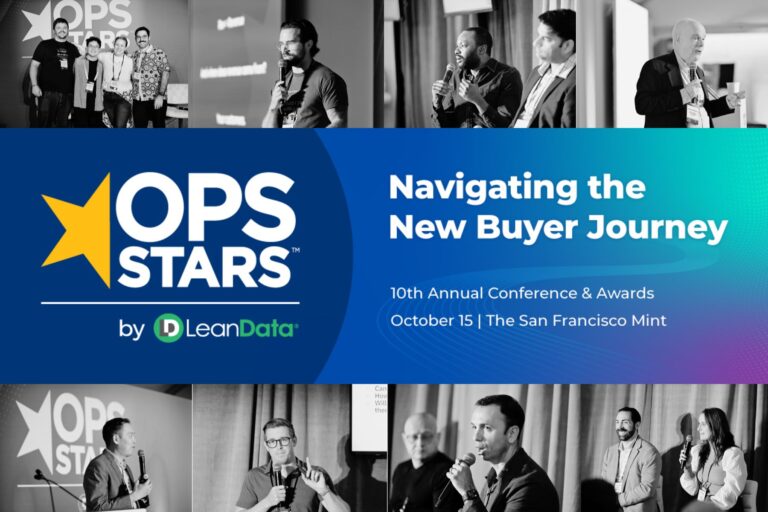Gone are the days when the Chief Marketing Officer (CMO) was only responsible for overseeing ad campaigns or approving marketing copy. Today’s CMO is a strategic leader, playing a critical role in shaping the entire company’s direction. The modern CMO influences nearly every business function, from sales to operations, and their impact on revenue growth has never been more apparent.
In an era where aligning sales, marketing, and operations is crucial for driving revenue, CMOs are stepping up to lead the charge. Yet, many companies still struggle to fully grasp the evolving role of the CMO, particularly with the rise of Revenue Operations (RevOps).
The Evolving Role of the Chief Marketing Officer (CMO)
Traditionally, the CMO’s responsibilities revolved around mass marketing efforts like direct mail and radio advertising. However, digital transformation has shifted the CMO’s role towards data-driven strategies, demanding precision targeting and a deep understanding of customer behavior. With the rise of online purchasing and the shift to digital marketing, businesses must now prioritize their long-term customer value—and the CMO is at the center of this strategy.
The modern CMO is tasked with bridging the gap between marketing, data, and strategy. Their influence on Revenue Operations ensures that every aspect of the customer lifecycle is aligned with the company’s revenue goals. As the role of the CMO continues to evolve, it’s clear that they must not only be adept in marketing strategies but also deeply involved in revenue-driving processes across departments.
How CMOs Align with Revenue Operations
Revenue Operations, or RevOps, touches every part of the business that interacts with the customer—from marketing to sales and customer service. A CMO must now collaborate across departments to ensure a seamless customer experience that drives revenue. This alignment is essential for companies aiming to create an integrated strategy that supports revenue growth at every stage of the customer journey.
CMOs today are expected to develop comprehensive growth strategies that span from finance to sales, making their role more critical than ever. They must ensure that every function within the organization is aligned with the company’s overarching revenue goals. This includes building processes that drive revenue, fostering collaboration across teams, and ensuring customer-focused strategies that resonate with today’s informed buyers.
Why settle for a lead when you can capture the WHOLE buying committee?
Sell the way the business buys.
Click Here
The Short Tenure of the CMO in the Modern C-Suite
Despite the growing importance of the CMO role, it has one of the shortest average tenures in the C-suite—only 3.6 years, according to a Korn Ferry Institute survey. This is significantly lower than the average tenure for other C-suite executives, which stands at 5.3 years. One reason for this could be the rapidly evolving nature of marketing itself. Many companies struggle to define the role of the CMO clearly, leading to inconsistent expectations and frequent turnover.
In response, some companies are experimenting with alternative titles like “Chief Growth Officer” or “Chief Customer Officer” to better reflect the expansive responsibilities of modern marketing leaders. The marketing function has evolved from being viewed as a cost center to a critical business driver, responsible for innovation, customer insights, and profitable growth strategies.
Key Responsibilities of the Modern Chief Marketing Officer
- Enterprise Strategy: CMOs now design enterprise-wide strategies to deliver business growth. This includes working closely with sales, product development, and marketing communications.
- Data & Analytics: A major shift in the CMO role is the increased reliance on data. CMOs must harness analytics to drive growth strategies, providing insights that guide product innovation and customer experience.
- Digital Transformation: As companies shift toward digital, CMOs need to oversee digital marketing strategies, including social media, advertising, and content creation. They must understand how digital impacts brand awareness, lead generation, and ultimately, revenue.
- Customer Experience: CMOs are also responsible for creating personalized customer experiences, leveraging technology to provide a seamless journey from awareness to conversion.
The Importance of Technology for the Modern CMO
As technology plays an increasingly pivotal role in marketing, CMOs must be proficient in areas like artificial intelligence, marketing automation, and data security. Understanding the company’s technology stack is no longer optional—it’s a requirement for success. CMOs need to know how to collect, manage, and leverage customer data to enhance the customer experience and support overall business goals.
These technological advancements also help CMOs demonstrate value to the executive team. With the right tools, CMOs can provide measurable results through data-driven insights, ensuring they play a key role in driving the company’s growth.

How to Hire the Right CMO for Your Business
Hiring the right CMO starts with a clear understanding of the company’s marketing needs and goals. A successful Chief Marketing Officer must be well-versed in both traditional and digital marketing channels. They should also have a strong technical mindset, capable of analyzing data and customer insights to drive business decisions.
Visionary leadership, excellent communication skills, and a passion for innovation are essential traits in any successful CMO. Additionally, as the role continues to expand, it’s important to find a candidate who can adapt to the changing marketing landscape, balancing creativity with data-driven decision-making.
The Chief Marketing Officer’s Expanding Role in Business Growth
The role of the CMO is more important than ever. By aligning marketing with sales and operations, CMOs are helping companies create customer-focused strategies that drive revenue and long-term success. As businesses continue to evolve in the digital age, the CMO’s influence on revenue operations, customer experience, and data-driven strategies will only grow.
With the right CMO at the helm, businesses can not only meet their revenue goals but exceed them, creating a competitive edge in today’s market. As companies redefine the role of the Chief Marketing Officer, it’s clear that this position will continue to be instrumental in shaping the future of business growth.









